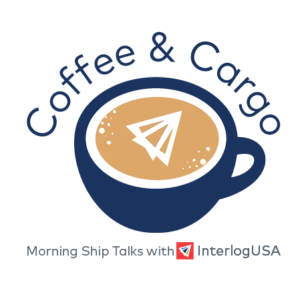Competitive Edge
UPDATE: U.S./Canada Ports – Number of Vessels at Anchor as of 10-25-22
- Savannah: 32 Vessels at Anchor (0)
- Vancouver: 30 Vessels at Anchor (0)
- Houston: 20 Vessels at Anchor (+3)
- New York/Newark: 12 Vessels at Anchor (+1)
- Los Angeles/Long Beach: 10 Vessels at Anchor (-4)
- San Francisco/Oakland: 10 Vessels at Anchor (0)
- Mobile: 6 Vessels at Anchor (-1)
- Charleston: 1 Vessels at Anchor (-2)
Note: This count does not include vessels moored and being unloaded at port docks. Colored numbers in parentheses represents the change from last week over. Data is courtesy of MarineTraffic live vessel traffic map.
Have another U.S. or Canadian port you’d like us to track weekly? Let us know!
Takeaways
The total waiting vessel queue at North American ports is fewer than 100—similar to the level observed in June.
- U.S. West Coast: Consistent with little change has been the mantra for WC ports. Despite a spike last week, Los Angeles and Long Beach are back to their typical vessel backlog that we’ve been observing the past few months.
- U.S. Gulf Coast: After a stunning drop two weeks ago, Houston has only added on three vessels to its backlog for this week. Maybe, the Gulf’s largest port will nestle itself in this lower range going forward. Meanwhile, Mobile has shown its first stable week over the past month. Up until now, the Alabama port has had a bizarre trend of erratic changes to its backlog.
- U.S. East Coast: Savannah remains at the forefront. However, its congestion has also settled and has not jumped up over the last few weeks. With import volumes waning, it’s likely that any change to Savannah’s backlog will be headed in a downward direction. New York remains stable.
- Canada: Vancouver’s congestion remains prominent, but the port is continuing to improve with berthing delays and rail service. It’s unlikely that this backlog will grow or even sustain over time. Expect gradual decreases to Vancouver’s count going forward.
COVID-19 UPDATE – Ningbo, China
We have been following for the last few weeks an outbreak of COVID-19 cases in Ningbo and its surrounding area. As of Monday, our Chinese partner Triple Eagle Ltd told us that restrictions in the region around the port are relaxing as cases continue to fall. After a one-week lockdown, container yards and warehouses will take some time to return to normal, Triple Eagle went on to share. Here’s an update on Ningbo’s logistics scene:
- Container yard operations have resumed as usual.
- All warehouses near terminals are reopened. LCL and consolidation services have gradually resumed work.
- Drivers are required to have a negative NAT report (COVID-19 test), a health code, and a travel code in order to gate in warehouses and terminals.
- With some drivers prohibited, shippers should expect challenges with picking up empty containers and delivering cargo
IMPORT: Asia to North America (TPEB)
Recent Developments:
- Contract negotiations between the International Longshore and Warehouse Union (ILWU) and Pacific Maritime Association (PMA) have been put on hold. – pending a resolution on a hearing. See below for more information regarding this. The existing labor contract between the two parties expired July 1.
- Los Angeles, Long Beach, and Houston remain impacted on the rail side of things. Dwell times are around 15 to 20 days. However, incremental improvements to congestion at some inland hubs are promising signs going forward
Rates: Rates continue to fall. Notably from Chinese base ports to all U.S. coasts.
Space: Space is open.
Capacity: Lower demand has led to carriers reducing their capacities. However, capacity is generally open for transpacific eastbound trade.
Equipment: Chassis availability is increasing. Inland rail ramps remain congested; however, St. Louis and Fort Worth have both reported decreases to their container backlogs.
TIPS:
- Book at least two weeks prior to the ready date.
- For cargo ready now, take advantage of open space and fallen rates on the spot market.
- Blank sailings have been more common. Keep this in mind as it effects schedule integrity.
IMPORT: Europe to North America (TAWB)
Recent Developments:
- Northern European hubs, such as Rotterdam, Antwerp, and Hamburg, remain congested.
- Labor-related tensions remain gripping Great Britain’s ports as dockworker unions seek a new pay deal that will match with inflation rates. Workers at both ports have engaged in recurring walkouts over the last couple of months. No deal or tentative agreement have been reached.
- Nearly 600 dockworkers at the Port of Liverpool began another strike on Monday. This strike is expected to last two-weeks.
Rates: Rates have seen some decreases. However, not at the same clip as other trade lanes. When more capacity is introduced, expect rates to trend downward.
Space: Space remains tight to the USEC and open (in pockets) to the USWC. A niche string has been announced by a new carrier calling at Turkey, Italy, and Spain to New York.
Capacity: Capacity is increasing as carriers are adding larger vessels to USEC loops in October.
Equipment: Equipment at European seaports is not as readily available as it has been for the past few months. Inland terminals in Europe are also still reporting equipment shortages. On the U.S. side, chassis availability has increased.
TIPS:
- Book five or more weeks prior to ready date.
- Stay up to date with your forwarder and carrier advisories on added capacities and declining rates for the transatlantic westbound lane.
- Strongly consider premium services for no-roll options and improved reliability of cargo.
EXPORT: North America to Asia
Recent Developments:
- For the U.S., port congestion remains an issue for Savannah and Houston.
- Diminished schedule integrity continues to challenge post earliest return dates.
- Vessel arrivals remain smooth for USWC POLs.
Rates: So far, no GRIs announced for October.
Capacity: Available capacity remains fluid for USWC POLs.
Equipment: Inland ports still are reporting container and chassis deficits (the latter improving). Standard equipment at ports remains available unless advised otherwise.
TIPS:
- Book four to five weeks prior to the time of departure to secure necessary equipment and vessel space.
InterlogUSA Proudly Presents... Our New Podcast!

Offering insights into breaking news, market trends, our company’s history, and more.
“FreightFM” features short-form video interviews with InterlogUSA’s industry experts.
Did You Know: California is Planning to Spend $1.2 Billion to Upgrade Port and Supply Chain Infrastructure
The majority of the funds (roughly 70 percent) will go to the Ports of Los Angeles and Long Beach. The remainder of the funds will go to improving ports and goods movement throughout the rest of the state.
Project applications are due January 13, 2023 and funding awards will be announced in March 2023.
Source: Supply Chain Dive
Freight News
Main factors of port congestion – vessel backlogs, container dwell times, etc. – at the Port of LA/LB have shown slight improvements the last two months
The Port of Los Angeles and Long Beach have always been in the news regarding port congestion and what cargo volumes are looking like at the port, among other things.
Recently, it has been reported that some main indicators of port congestion such as vessel backlogs, container dwell times, adequate chassis space, have shown improvements the last two months. Which some argue is not good for the overall U.S. freight supply chain, because the problem has shifted from one coast (the USWC) to another coast (the USEC and USGC). As of Monday, just 27 vessels were at anchor or loitering – which is down from 104 during it’s peak at the port last year, Maritime-Executive reports.
Average dwell times for containers leaving the port of LA/LB by rail were at 15.5 days in September, which is down slightly from 16.5 days in August but is still nearly five times the ‘normal’ three-day dwell for rail containers. Average dwell times for containers leaving the terminal by truck was 4.2 days in September, which is right at the ‘normal’ level for local delivery containers and down from 5.1 days in Augusts – all data from the Journal of Commerce.
Cargo volumes at the ports have dropped
In September, the port handled 21.5 percent less containers than it did in September 2021 – which was the busiest month on record for the Port of LA.
Highlights of the Week
A resolution on Mississippi River barge shipping problems still remains: Current water levels are at some of the lowest the Mississippi River as seen in recent years, and some areas have even reached or passed historic low-water levels. This has caused significant issues to the marine transportation system. As of now, a Coast Guard official has reported that the Mississippi is closed to traffic at mile-marker 676,686 near Battle Axe/Tunica, Mississippi. Additionally at that area is a queue of 66 vessels and 1,055 barges headed northbound and 23 vessels and 24 barges southbound, FreightWaves reports.
Port of Mobile breakbulk dockworkers avoid a strike as they head to mediation with their employer: A week ago, longshore workers at the Port of Mobile’s breakbulk and general cargo docks warned they were willing to strike if a deal was not reached by Thursday, October 20th. Now, the dockworkers and their employer have agreed to return to the bargaining table for contract talks – which will be overseen by the Federal Mediation and Consiliation Service (FMCS), the Journal of Commerce reports. Currently, the main issues for the dockworkers are work jurisdiction, manning levels, and benefits contributions.
Port of Liverpool dockworkers have started a new two week strike: On Monday, dockworkers walked out as they started their new two week strike over pay – this is the third strike by members of the Unite the Union since their first strike back in late August. The disgruntled discussions between the union and the port continue to remain, as the union feels like the port is not negotiating in good faith. While the port says the union has refused to let all employees an independent postal vote on the most recent offer, that would have increased pay by 11 percent, the JOC reports.
An update on USWC ILWU contract talks: Contract negotiations have been going on for the past five months between the USWC dockworkers and the marine terminal employers. The most recent update that came out shows those talks are now on hold – pending a resolution regarding a hearing to determine the jurisdiction of cold-ironing work at an SSA-run terminal at the Port of Seattle, the JOC reports.
Watch Last Week's Webinar and Sign Up for Next Month's

Take a look at last week's webinar where we discussed a variety of topics including:
-New Detention and Demurrage Law in California
-The Busy Holiday Season for Domestic Shippers
-How Buying Patterns Have Changed Throughout the 2nd Half of 2022
-Current Events
-Live Q&A!
If you would like to sign up for our next webinar in November, please make sure to click the sign up button below!
Interlog  Insights
Insights
Sign up for our brand new Interlog Insights newsletter where we send out weekly predictions from our experts regarding the freight industry! This is a good way to stay up to date on what is happening in the freight world and also get a peek into what we expect may be to come!
Sign up for our
industry answers
Our team works to provide valuable, unique, and relevant content to assist you in finding solutions. Sign up now.



